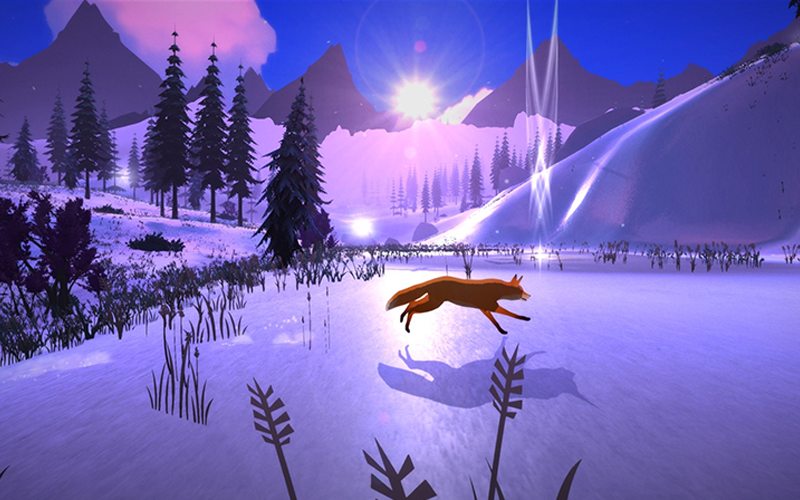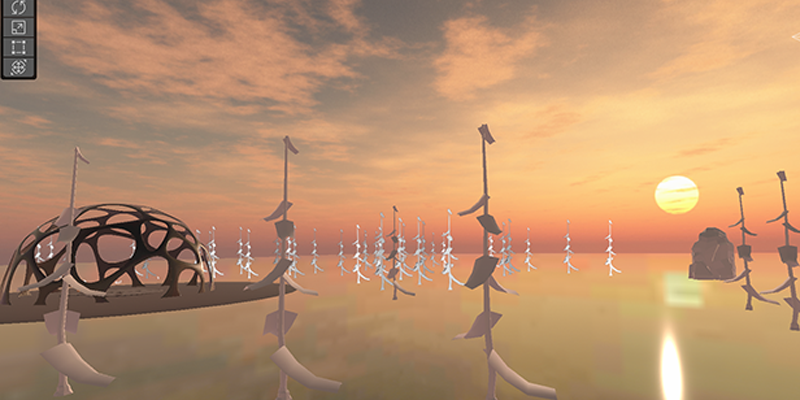
ELYSIUM
A Case Study in Purposeful VR Design
Virtual Reality
Narrative Design
UX
Designing for Wellness in a Confined Space. Modern travel and medical contexts present a unique paradox: we have access to the world, yet the journey or environment itself can be a source of anxiety and physical discomfort. Traditional solutions like movies or music often fail to provide a true escape. I identified a gap in the market for an effective, immersive wellness solution. My vision was to use VR's ability to make the brain perceive virtual environments as "real" to create an experience that genuinely influences a user’s emotions and well-being.
Challenge
Elysium is a virtual reality (VR) wellness experience designed to alleviate stress, boredom, and discomfort for people in restrictive environments, such as long-haul flights or hospital beds. My role as the UX/Product Designer was to create an immersive, purposeful digital solution that leverages the power of VR to positively influence a user's emotional state. Elysium is a testament to how user-centered design can transform technology into a tool for well-being.
Solution
My Process:
A Human-Centered Approach
My design process was an iterative, human-centered journey, beginning with deep research and moving through multiple phases of prototyping, testing, and refinement.
Discovery & Research
My journey began by understanding the user. I conducted a mixed-methods research approach, blending quantitative data from surveys and qualitative insights from semi-structured interviews and digital ethnography
Surveys
My initial surveys of 50 participants confirmed a market need, revealing that 40% of air travelers experience anxiety during flights and 45% would be interested in a wellness VR app. I also found that 70% of users were interested in interactive, game-like experiences.
Interviews & Ethnography
I went deeper with semi-structured interviews and digital ethnography on the Spatial.io platform. This revealed critical insights: users sought a mix of active and passive roles, preferred nature-based environments, and disliked overly complex UI or intrusive emotion tracking.
I used tools like Mind Maps and Affinity Diagrams to synthesize this data into a clear set of user requirements.
Ideation & Design
Based on my research, I established three core design principles that would guide the entire project:
Biophilic Design as a Mechanic
I chose to use natural elements not just for aesthetics but as a functional mechanic to promote relaxation, referencing the restorative power of nature.
Simplicity & Immersion
To reduce cognitive load and maintain presence, I focused on a minimal UI. I designed navigation using portals that adhere to Hick's Law and Fitts' Law, simplifying user choice and ensuring large, easy-to-select targets.
Narrative as a Guide
I introduced Foxoony, an empathetic guide, to provide audio-based navigation and emotional connection without breaking immersion.
Non-Domain Influences: Inspiration Beyond VR
My design process was not confined to competitor analysis. To create a truly unique and impactful experience, I drew inspiration from a diverse range of artistic and narrative works. This interdisciplinary approach was crucial to shaping Elysium's core identity.
Storytelling and Empathy
The award-winning experience, The Key, inspired the use of immersive storytelling to evoke empathy. This influenced Elysium's narrative, where the user's journey and relationship with Foxoony are designed to foster emotional connection and self-discovery.
Aesthetics and Emotional Connection
I adopted the minimalist design and muted color palette of the game, The First Tree. The game's connection to its silent fox protagonist directly informed Elysium’s calming aesthetics and the empathetic design of Foxoony.
Gameplay and Metaphor
The elemental philosophies of Avatar: The Last Airbender were a significant influence on the design of the puzzles. Just as the show uses its elemental systems to explore themes of balance and self-discovery, Elysium's puzzles are metaphors for growth and emotional regulation.
Technical Execution & Functional Design
My design decisions were deeply informed by technical constraints and an unwavering focus on the user. I built Elysium as a one-person team, making every choice intentional to create a high-quality MVP.
Puzzle Mechanics: Gamification for Wellness
To satisfy user interest in interactive content, I implemented purposeful, game-like puzzles using Unity's XR Interaction Toolkit. I meticulously planned each puzzle's workflow using diagrams as a visual blueprint for coding.
Water Gem Puzzle: Initial testing revealed that users' mental models for interaction conflicted with the gaze-based mechanic, demonstrating that a successful VR experience required teaching new behaviors through intuitive, multi-sensory feedback.
Air Gem Puzzle: The puzzle's core issue was not technical but conceptual; users didn't understand they were "cleaning the air," revealing that even intuitive mechanics fail without a clear purpose that aligns with the user's mental model.
Fire Gem Puzzle: To make this sequential puzzle intuitive, I added visual and audio hints that guided the user, demonstrating a clear design response to user testing.
Systems Architecture: Building a Cohesive Experience
I focused on creating modular systems that would ensure a seamless, high-quality experience.
Dialogue & Audio: I created a comprehensive audio management system to prevent dialogue overlap. I used a Singleton Pattern to ensure dialogue wasn't repeated across scenes.
Movement & Progression: The script makes the guide feel alive, responding to user movement with realistic animations. I also addressed a key user complaint by modifying the fireflies to use proximity detection to wait for the player, giving the user control over pacing.
Iteration & Validation:
A Phased Testing Approach
A key strength of the Elysium project was my commitment to a phased, iterative testing process that directly informed every design decision.
Phase 1: Interactive Prototyping
The most compelling finding from Phase 1 was the positive reception of Foxoony. This validated the core design choice of a narrative guide, confirming that the foundational concept of a character-driven experience resonated with users and was worth building upon.
Phase 2: Exploratory Prototyping
A compelling discovery was the portals' unintended emotional impact; user's feedback revealed they provided a sense of "sensory regulation," demonstrating that the design had a positive, therapeutic effect beyond its navigational function. This validated the holistic approach to creating a VR wellness experience.
Phase 3: Custom Build
This phase introduced the puzzles and narrative, revealing key usability issues. Users found the puzzle mechanics and dialogue confusing, which led to improved code, clearer visual cues, and refined dialogue. A new finding - that users needed a quick way to return home was addressed by creating a quick menu and adding fireflies as navigational waymarkers.
Phase 4 & 5: Polishing the UX
Immersion
A user quote revealed the app’s success in achieving presence, stating, "I was in there for almost an hour and I didn't even know it!" This demonstrated the app's ability to create a truly restorative escape by making users lose all track of time.
Usability
I found that integrating the onboarding sequence into the narrative was a highly effective solution. This approach taught users how to use the controllers without breaking immersion, solving a key usability challenge while strengthening the user's bond with the world.
Agency
The use of subtle pathfinding, such as gentle nudges from mushrooms and arrows, proved highly successful. This guided users through the world without making them feel forced, thereby enhancing their sense of agency and presence.
Critical Evaluation & Project Outcomes
Elysium successfully achieved its objective of delivering a Minimum Viable Product (MVP) that meets core user needs.
The project successfully delivered a Minimum Viable Product (MVP) by making strategic design and technical trade-offs. I applied the puzzles as a dual purpose: as interactive narrative elements and also a performance optimization strategy. By having a puzzle trigger the loading of the next area's assets, I kept the CPU load low and maintained a high frame rate.
I also found that the app successfully enhanced a user's sense of agency and presence, which directly addressed the pain points of feeling confined and overwhelmed. A final compelling insight was the ability to solve unpredictable user behavior, such as users' actions causing audio files to play over one another. This required a robust coding solution that ensured a seamless and immersive experience.























